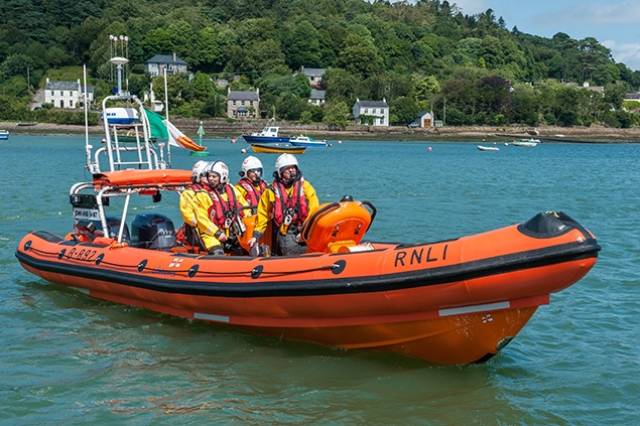A new Atlantic 85 lifeboat for Crosshaven RNLI is to be officially named John and Janet during a ceremony at the Cork lifeboat station at 2pm on Sunday 11 September.
The lifeboat which went on service in June this year was funded by an anonymous donor. Afloat.ie's Tom MacSweeney will represent the donor at the naming ceremony and service of dedication and will officially hand the lifeboat into the care of the RNLI.
The lifeboat will be named by Paddy Crowley, son of the late Con, a long serving and much loved helm at Crosshaven RNLI who died suddenly last year.
Last year, Crosshaven RNLI launched 42 times and rescued 50 people. The new lifeboat replaces Miss Betty, the station’s first permanent lifeboat, which was on service in Crosshaven since the station was formally established 14 years ago.
Speaking ahead of next week’s event, Patsy Fegan, Crosshaven RNLI Lifeboat Operations Manager said: ‘The naming ceremony and service of dedication is a very special occasion for our lifeboat station and we are grateful to the anonymous donor who funded our new lifeboat. Since the lifeboat went on service in June, it has launched 17 times and rescued 34 people.’
Fast, manoeuvrable and reliable, the B class operates in rough weather conditions, capable in daylight up to force seven and at night, to force six winds.
The new lifeboat, an Atlantic 85 is the latest version of the B class, introduced into the fleet in 2005. She is powered by two 115horsepower engines and has a stronger hull and greater top speed than her predecessor. The added radar allows the crew to operate more effectively in poor visibility and she also has VHF direction-finding equipment.
The vessel also has a manually operated self-righting mechanism which combined with inversion-proofed engines keep the lifeboat operational even after capsize. The lifeboat can also be beached in an emergency without causing damage to its engines or steering gear.
The Atlantic 85 carries a full suite of communication and electronic navigation aids, as well as a searchlight, night-vision equipment and flares for night-time operations.
The RNLI first established Queenstown Lifeboat Station in 1866, following several wrecks with loss of life off Cork Harbour. However, the first record of a lifeboat in Cork Harbour was as far back as 1825, one year after the founding of the Institution.
Since the closure of Queenstown in 1920, many attempts were made to site a lifeboat in the harbour.
Based on the level of activity in the area, the availability of crew and temporary facilities, a decision was taken to place an Atlantic 21 on evaluation for 12 months in 2000 before the RNLI declared the station a permanent facility in 2001.
Miss Betty, the station’s first permanent lifeboat arrived in 2002 where she remained on service until June this year.
The RNLI is a charity which relies on voluntary contributions and legacies.






























































